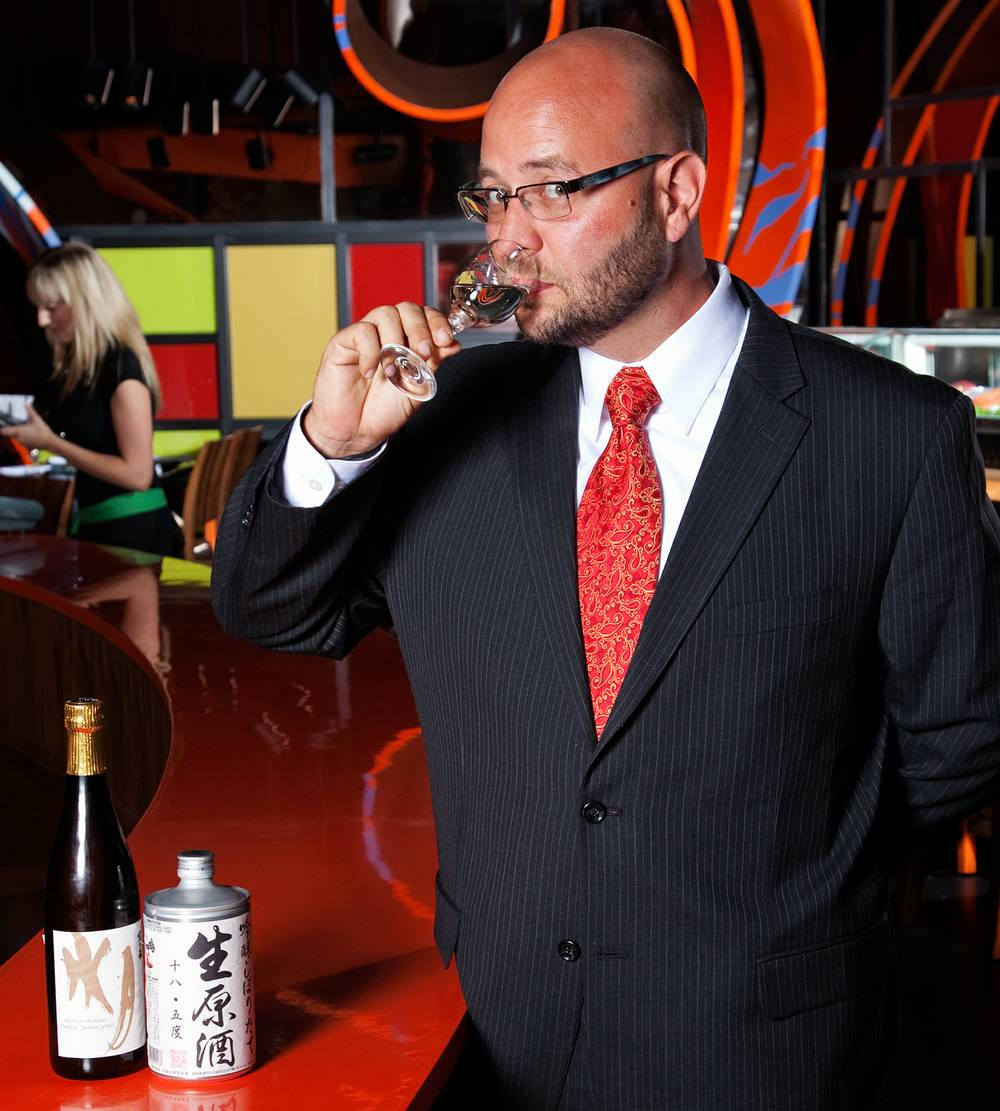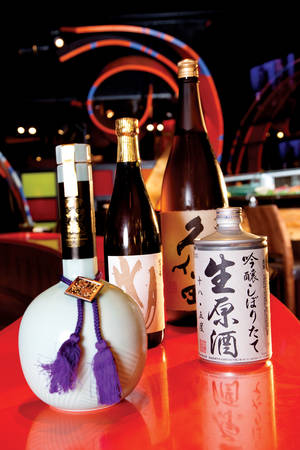Hayes Swope hears all too often that people don’t drink sake. They drink whiskey, or Sauvignon Blanc or rum, but sake? Not so much. But the SushiSamba director of operations isn’t easily deterred. “I have a sake for everybody,” he says. “If someone comes in and says they’re a Malibu Bay Breeze drinker, I can pair a sake.”
He can also talk knowledgeably about sake’s origins in the mouths of Japanese virgins some 2,000 years ago, traditional brewing techniques and the role the relatively young spirit plays in Japanese culture. And if you’re looking for something to pair with SushiSamba’s robata duck, Kobe sliders or oysters from the raw bar, Swope can help with that too. The restaurant’s sake list—curated by Swope—is 128 bottles strong and growing, with prices ranging from $49 to $2,885 for a cryogenically aged super-premium sake that’s extremely rare. “The only place you can buy it in the world is SushiSamba. We worked on that for a year,” Swope says.
With Japanese sake, he adds, you get what you pay for, though that doesn’t mean you have to drop a grand for something good. Swope’s favorites fall somewhere in between, like the Masumi Arabashiri, an unpasteurized, undiluted sake that goes for $76 a bottle but, he says, stands up to sakes seven times as expensive.
Restaurant Guide
- SushiSamba
- At the Palazzo, 607-0700.
- Sunday-Wednesday, 11:30 a.m.-1 a.m.; Thursday-Sunday, 11:30 a.m.-2 a.m.
- sushisamba.com
The best way to find your favorite is to experiment, Swope adds, and SushiSamba offers 12 sakes by the glass to help you do just that. As with any experiment, though, it helps to have some basic knowledge to build on. This sake primer should help you get started:
Good brew While it’s often paraphrased as “rice wine,” Swope says sake is really more like beer. “You can’t get juice from a grain of rice,” he laughs.
High shine To create the spirit, rice grains are polished to varying degrees. Ginjos, or premium sakes, have at least 40 percent of the rice grain polished away and are great with food. Daiginjos, or super premiums, have at least 50 percent polished off and pair well with delicate items like sashimi. Super 9, an extremely high-end sake, is so named because 91 percent of the rice is polished away, though Swope says that won’t necessarily be everyone’s favorite. For the brewers, “ginjos are their masterpiece, because you can work with the impurities.”
Location, location, location The best sakes come from the areas with the best water. “All the breweries are built on natural springs,” says Swope. “They’re very proud of their water.” In particular, look for sakes from the Yamagata, Nagano, Niigata or Hiroshima prefectures, areas that are known for producing high-quality sake.
Hot and cold Swope puts the ongoing debate over the correct temperature for sake to rest. It’s not hot or cold, “in Japan, you drink it hot and cold,” he says. Premium ginjo or daiginjo sakes are meant to be drunk cold, but futsu-shu, or table sake, is served warm. The PBR of the sake world, “it’s the sake to feed the masses. It’s traditionally served warm to round out the edges,” Swope says.



Previous Discussion: